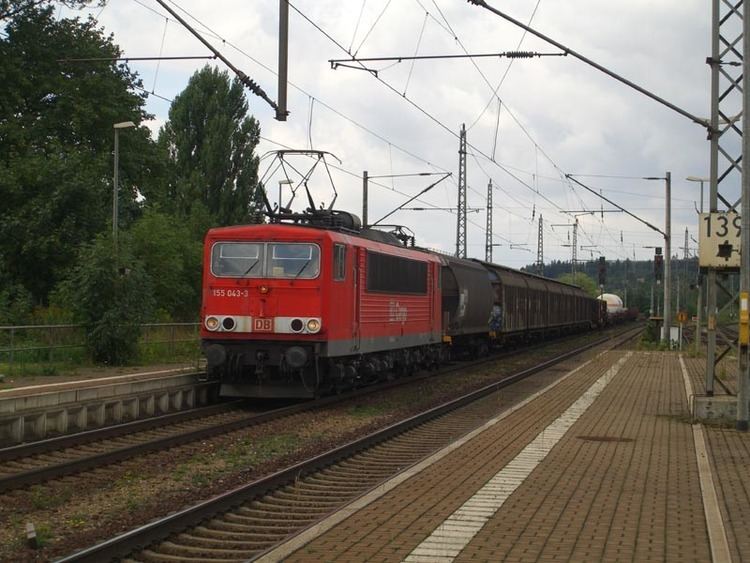Power type Electric Total produced 273 Length 19.6 m (64 ft 4 in) | UIC class Co'Co' | |
 | ||
Gauge 1,435 mm (4 ft 8 ⁄2 in) | ||
The Deutsche Reichsbahn (East Germany) Class 250 (known since 1992 as Deutsche Bahn AG Class 155) is a German electric locomotive used on freight trains. Nicknamed the “Electric Container” or “Powercontainer” due to its distinctive carbody shape. The less favorable nickname “Stasi-Container” is also heard every now and then. It was the most powerful locomotive in the former GDR.
Contents
History
In the mid-1960s, it became apparent that engine classes 211 and 242, in production since 1961, were not powerful enough, so DR built a new, 6-axled, electric locomotive suitable for all classes of traffic. In 1974 three prototypes were built by LEW Hennigsdorf, the leading builder of railway locomotives in the GDR. A series of 270 locomotives were delivered between 1977 and 1984. They were mainly used for heavy cargo trains as well as the fast Städteexpress-train services of DR (comparable with InterCity).
After the reunification of Germany, railway traffic in East Germany slumped. The locomotives were renumbered as class 155, and many of them also operated in West Germany. After Deutsche Bahn was restructured, the engines were assigned to DB Cargo (later Railion, now DB Schenker Rail) for freight services. Since 1998, some locomotives have been used for spare parts. Approximately 200 are still in existence and can be seen throughout Germany pulling all sorts of freight trains. Today the 155s remain indispensable for DB Schenker, Deutsche Bahn's railway cargo carrier.
Construction
The locomotives have two 3-axled bogies. Each axle is powered by a single-phase, series-wound, AC motor. The torque is transferred by a double-sided spur gear to a hollow shaft, and by an elastic rubber cone flange to the wheels. Each motor has an own cooling blower. Two scissor-shaped pantographs collect the current of 15 kV / 16.7 Hz from the catenary. Recently, many of these pick-ups have been refitted as modern single-arm pantographs.
The core of the electric system is the 3-blade main transformer with oil-cooling. The control unit has 30 power notches, semi-automatic in operation. The settings are thyristor controlled and the thyristor voltage is regulated by phase cutting, which was a novelty for series locomotives in the GDR. All units are equipped with a catenery-current-controlled electric brake. The safety equipment in the driver's cab has an electronic deadman's brake (Sifa), “punctiform” automatic train controls (PZB 90), and train radio equipment with GSM-R communication. Relatively recently, computers were added for the electronic timetable EBuLa.
Some of the models have been equipped with the LZB System. Recently, these are used to haul heavy and fast container trains on the German high-speed network.
